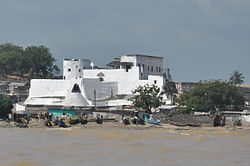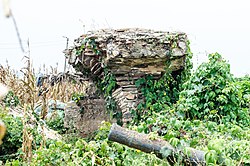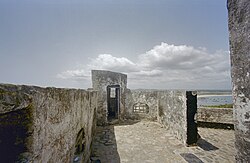Fort Saint Anthony in Axim, Western Region, Ghana
In 1503, the Portuguese had built a trade post in Axim, near the edge of the River Ankobra, but they had to abandon it due to insistent attacks by the local people. They then constructed, in 1515, a massive triangular fort on a small promontory closer to the River Ankobra. Named ‘Santo Antonio’, it was the second Portuguese fort built on the Gold Coast, after St. George’s Castle (Elmina Castle). To enhance its defence on the landward side, a three-metre deep rock-cut trench was constructed.
The effective defensive capability of Fort St. Anthony was revealed by its ability to withstand attacks for over four years, even after the fall of Elmina to the Dutch in 1637. Having no rival in the surrounding gold-rich lands of the Ankobra and Tano River valleys enhanced the economic viability of the fort; gold traders from Adanse and Denkyira frequently visited the fort. However, between 1670 and 1720, with the construction of rival forts in the bays east of Axim, Portuguese trade monopoly was ruined.
By the 1720s, St. Anthony had become a Dutch fort. The fort is reported to have amassed ‘more gold at Axim than anywhere else together’ , especially after the dissolution of the Brandenburg Company and the death of John Conny (see Fort Gross Fredericksburg). The area was also an important source of timber and cotton for Dutch plantations.
The fort was ceded to Britain in 1872.Relevante Bilder
Relevante Artikel
Historische Forts von GhanaDie historischen Forts von Ghana sind eine Reihe von Befestigungsanlagen entlang der ghanaischen Goldküste, deren Ursprünge teilweise bis in das 15. Jahrhundert hineinreichen und von denen manche von der UNESCO zum Weltkulturerbe gezählt werden. .. weiterlesen




































